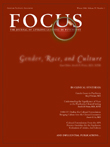Childhood Traumas: An Outline and Overview
Abstract
Childhood psychic trauma appears to be a crucial etiological factor in the development of a number of serious disorders both in childhood and in adulthood. Like childhood rheumatic fever, psychic trauma sets a number of different problems into motion, any of which may lead to a definable mental condition. The author suggests four characteristics related to childhood trauma that appear to last for long periods of life, no matter what diagnosis the patient eventually receives. These are visualized or otherwise repeatedly perceived memories of the traumatic event, repetitive behaviors, trauma-specific fears, and changed attitudes about people, life, and the future. She divides childhood trauma into two basic types and defines the findings that can be used to characterize each of these types. Type I trauma includes full, detailed memories, “omens,” and misperceptions. Type H trauma includes denial and numbing, self-hypnosis and dissociation, and rage. Crossover conditions often occur after sudden, shocking deaths or accidents that leave children handicapped. In these instances, characteristics of both type I and type II childhood traumas exist side by side. There may be considerable sadness. Each finding of childhood trauma discussed by the author is illustrated with one or two case examples.



